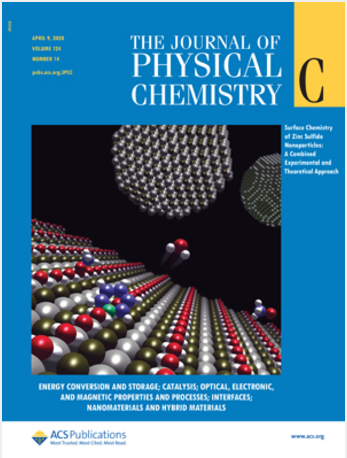Understanding Oxygen Ion Diffusion Mechanisms in YTiO3 Structures with Native Defects
IF 3.3
3区 化学
Q2 CHEMISTRY, PHYSICAL
引用次数: 0
Abstract
This study investigated the influence of native oxygen vacancies (VO) and interstitial oxygen (Oi) defects on oxygen ion diffusion in YTiO3. Using a combination of density functional theory (DFT) and molecular dynamics (MD) simulations, we explored the diffusion mechanisms and the role of these defects in enhancing ionic conductivity. Our results show that the presence of interstitial oxygen significantly promotes anisotropic diffusion of O2– ions, with a strong preference for diffusion along the y-axis, a trend that persists across different temperatures and concentrations. This anisotropy is attributed to the distortions induced by interstitial oxygen atoms at the 8d Wyckoff positions, which weaken the bonds between oxygen atoms and the crystal lattice, facilitating diffusion. The analysis of residence times revealed that oxygen atoms at the 8d sites exhibit shorter residence times compared with those at the 4c sites, especially at lower temperatures. This behavior is explained by the higher probability of a vacancy occurring in the vicinity of the 8d sites, leading to a higher probability of oxygen migration from these positions. Overall, our findings provide valuable insights into the mechanisms governing oxygen ion diffusion in YTiO3 and highlight the importance of interstitial oxygen defects in enhancing ionic conductivity, which could contribute to developing new cathode materials for solid oxide fuel cells (SOFCs).

氧离子在具有天然缺陷的YTiO3结构中的扩散机制
本文研究了天然氧空位(VO)和间隙氧缺陷(Oi)对YTiO3中氧离子扩散的影响。利用密度泛函理论(DFT)和分子动力学(MD)模拟的结合,我们探讨了这些缺陷在增强离子电导率中的扩散机制和作用。我们的研究结果表明,间隙氧的存在显著促进了O2 -离子的各向异性扩散,并具有沿y轴扩散的强烈偏好,这种趋势在不同温度和浓度下持续存在。这种各向异性归因于8d Wyckoff位置的间隙氧原子引起的畸变,这削弱了氧原子与晶格之间的键,促进了扩散。停留时间分析表明,8d位置的氧原子比4c位置的氧原子具有更短的停留时间,特别是在较低的温度下。这种行为可以解释为在8d位点附近出现空位的可能性更高,从而导致氧气从这些位置迁移的可能性更高。总的来说,我们的研究结果为YTiO3中氧离子扩散的控制机制提供了有价值的见解,并强调了间隙氧缺陷在增强离子电导率方面的重要性,这可能有助于开发固体氧化物燃料电池(sofc)的新型正极材料。
本文章由计算机程序翻译,如有差异,请以英文原文为准。
求助全文
约1分钟内获得全文
求助全文
来源期刊

The Journal of Physical Chemistry C
化学-材料科学:综合
CiteScore
6.50
自引率
8.10%
发文量
2047
审稿时长
1.8 months
期刊介绍:
The Journal of Physical Chemistry A/B/C is devoted to reporting new and original experimental and theoretical basic research of interest to physical chemists, biophysical chemists, and chemical physicists.
 求助内容:
求助内容: 应助结果提醒方式:
应助结果提醒方式:


